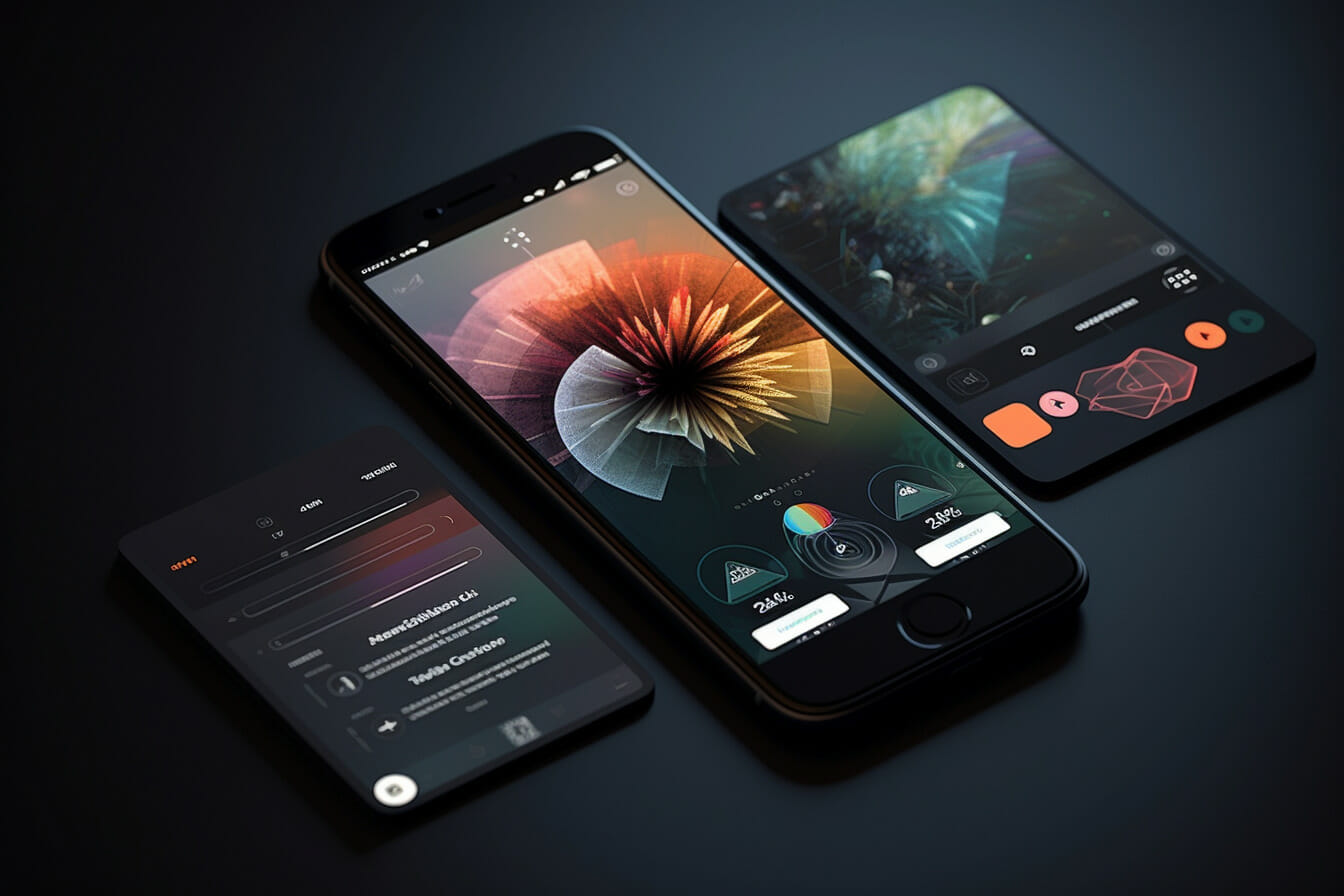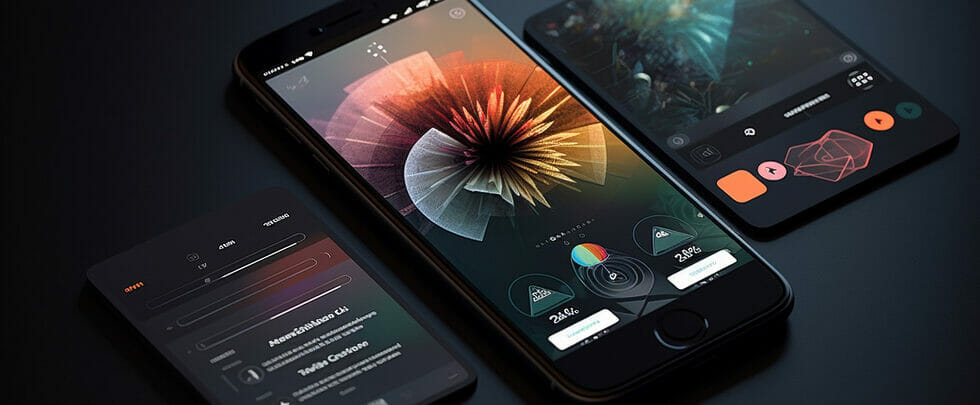Hybrid Apps: A Comprehensive Overview
Have you ever wondered about the magic behind your favorite mobile apps? They might be hybrid apps! These gems combine native and web applications, offering a unique user experience.
But is it all rosy? In this article, we’ll delve into hybrid app development, its pros and cons, and how to determine if it’s the right fit for your project. Plus, we’ll explore some success stories.
Let’s dive in!
Table of Contents
Defining the Concept

A hybrid app is a mobile application built using multiple web technologies like HTML, CSS, and JavaScript. It’s hosted inside a native application that uses a mobile platform’s WebView, like a Chrome browser window configured to run full screen.
Why is this important?
The beauty of hybrid apps is that they can function regardless of the device’s connection status. You can use them whether you’re online or offline. They’re also easier to develop than native apps, as they use a single code base for multiple platforms. You can write your code once and deploy it on Android, iOS, and Windows.
So, if you’re looking to build an app that’s device and platform-agnostic, a hybrid app might be your best bet.
Elements of Native and Web Applications
Combining features from both native and web applications provides an intriguing blend of functionalities. Native apps designed for a specific platform, like iOS or Android, impress with their high performance and seamless integration with the device’s capabilities. They can directly access the camera, GPS, and other features, providing an optimal user experience.
On the other hand, web applications are flexible and don’t require an installation process. Written in HTML, CSS, or JavaScript, they work across multiple platforms and are accessed through a web browser.
In comes the hybrid app, merging the best of these worlds. It’s engineered to run on multiple platforms like a web app while still interacting with the device’s features like a native app. This blend enhances user experience and expands accessibility, making it a popular choice for developers.
Pros and Cons of Choosing this Development Path

Before diving headfirst into this development path, weighing its pros and cons is essential.
Hybrid apps shine in terms of cost efficiency and speed of development. You can develop an app for multiple platforms using a single codebase, significantly reducing the time and resources needed. They’re also easier to maintain and update.
However, they come with a few drawbacks. Performance-wise, hybrid apps may lag behind their native counterparts due to the extra layer between the source code and the native system. They might not look or feel as good as native apps, potentially affecting the user experience. Additionally, they may not fully support all device-specific features or functionality.
It’s crucial to consider these trade-offs before deciding.
Determining Suitability for Your Project
Please consider if this development route is suitable for your project, considering factors such as your budget, timeline, and desired level of performance.
A hybrid app can be a cost-effective and timely solution if you’re working with a tight budget and schedule. The shared codebase across platforms saves you both time and money.
However, if your app requires high performance or a user experience that’s indistinguishable from a native app, a hybrid app may fall short.
You’ll also need to consider your target audience. If they’re tech-savvy and demand top-notch performance, a native app might be a better fit.
In the end, you’ll have to balance these considerations to determine if a hybrid app is the right choice for your project.
Case Studies of Successful Implementations

Let’s delve into some successful examples of businesses that have benefitted from this type of development.
Uber’s hybrid app offers a seamless experience across all platforms with its simple, intuitive user interface. This speed and efficiency are crucial for a business that relies on immediate customer engagement.
Instagram, too, utilizes a hybrid app, enabling it to deliver consistent, high-quality performance for its millions of daily users, regardless of their device.
The Bank of America revamped its mobile banking experience with a hybrid app, improving customer satisfaction. Its app provides a consistent, user-friendly interface on any platform.
These examples demonstrate how hybrid apps can lead to significant business success. Consider whether this approach could benefit your project.
Frequently Asked Questions
What is Hybrid Mobile App Development?
Mixed mobile app development is building mobile applications compatible with multiple platforms, such as iOS and Android, using a combination of web technologies (HTML, CSS, JavaScript) and native mobile app development frameworks.
How does a hybrid app differ from a native app?
Unlike native apps built using platform-specific programming languages (Java for Android, Swift for iOS), hybrid apps are created using web technologies and can be deployed on multiple platforms. Hybrid apps combine the best of both worlds, allowing developers to write code once and deploy it on different platforms.
What is a progressive web app?
A progressive web app (PWA) is a hybrid mobile app that uses modern web technologies to provide an app-like experience to users. PWAs can be accessed through a web browser and installed on a user’s device like a native app.
Can hybrid apps access device features like native apps?
Yes, hybrid apps can access device features like cameras, GPS, accelerometers, etc., using plugins and frameworks specifically designed for hybrid app development.
What is Hybrid Mobile App Development?
Hybrid mobile app development is the process of building mobile applications that combine elements of both native apps and web apps. These apps are developed using web technologies such as HTML, CSS, and JavaScript and then wrapped in a native container to be installed and run on mobile devices.
What is the difference between native and hybrid applications?
Native applications are built specifically for a particular mobile platform, such as iOS or Android, using platform-specific languages and tools. On the other hand, hybrid applications are made using web technologies and can run on multiple platforms with the help of a native wrapper.
How does a hybrid app compare to a native app?
Hybrid apps can offer cross-platform compatibility and faster development cycles than native apps. However, they may have reduced performance and limited access to device features compared to the native app store.
What type of app can be built using hybrid development?
Hybrid development can be used to build various types of apps, including social media, e-commerce, news, and more.
What are the advantages of hybrid apps compared to native apps?
The advantages of hybrid and native apps include cross-platform compatibility, faster development cycles, and lower development costs.
Conclusion
You’ve explored the world of hybrid apps, understanding their blend of native and web elements. You’ve weighed the pros and cons and hopefully determined if it’s the right path for your project.
Remember, big names like Instagram and Twitter have succeeded with this approach. Remember their victories as you forge your own path in the app development world.
It’s all about finding what works best for your unique needs.













